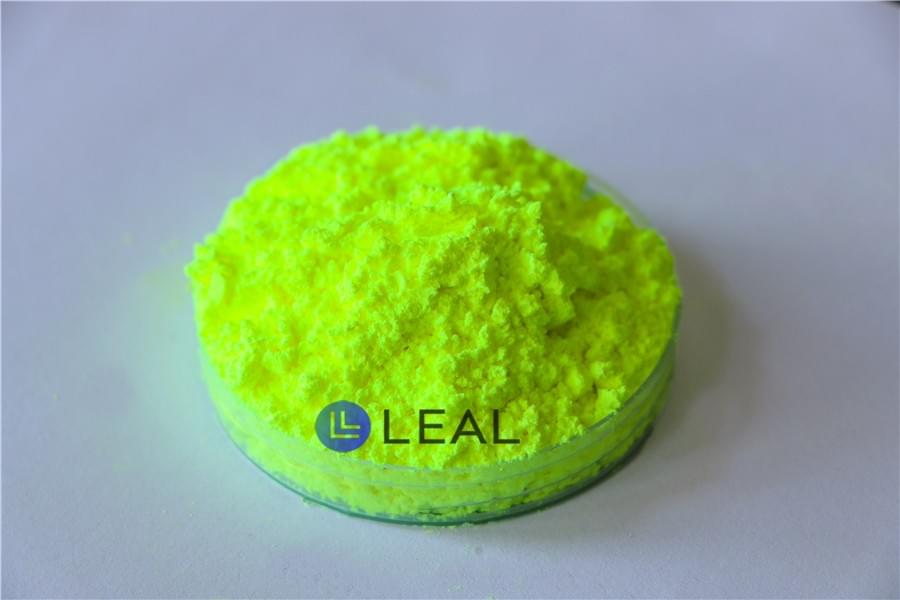Optical brightener OB and Optical Brightener OB-1 are brightening agents often confused with each other. Both are used for brightening but on different types of materials. Therefore, it is essential to understand the details and differences between them before selecting.
What is Optical brightener OB?
Optical brightener OB is a chemical substance mainly used to improve the optical properties of polymers, especially in enhancing the white or bluish-white appearance of products. Optical Brightener OB is a thiophenebenzoxazole compound with a large molecular weight and a specific chemical structure, which allows it to absorb light and emit blue-white fluorescence under ultraviolet irradiation, thereby achieving a whitening effect.
Fluorescent brightener OB has a wide range of applications. It can be used not only in thermoplastics such as PVC, PS, PE, PP and ABS, but also in a variety of materials such as coatings and printing inks. In addition, OB also has excellent heat resistance and chemical stability, allowing it to remain active during high-temperature processing and not easily decompose or lose effectiveness.
In terms of specific technical parameters, the CAS number of optical brightener OB is 7128-64-5, the molecular formula is C26H26N2O2S, and the molecular weight is approximately 431g/mol. It usually appears as light green powder, with a melting point ranging from 198 to 203°C and a purity of ≥98%.
In general, optical brightener OB is an efficient optical brightener that improves the appearance of the polymer substrate by absorbing ultraviolet light and emitting blue-white fluorescence. It also has good thermal and chemical stability. Suitable for a variety of industrial application scenarios.
What is optical brightener OB-1?
Optical Brightener OB-1 is a chemical additive mainly used to improve the whiteness of plastic and fiber products. OB-1 is a distyryl bisbenzoxazole compound with strong fluorescence and high temperature resistance.
The physical and chemical properties of OB-1 include: it is a yellow crystalline powder, insoluble in water, with a melting point between 359-362°C, a maximum absorption wavelength of 374nm, and a fluorescence emission wavelength of 434nm. This material is particularly suitable for polyester fibers such as polyester, and various engineering plastics such as ABS, PS, PVC, etc.
OB-1 has a wide range of applications. It can be used not only for traditional fiber and plastic products, but also for the whitening treatment of various materials such as molded parts, films and sheets. In addition, it is also used in varnishes, paints, coatings, printing, inks and synthetic leather.
However, despite its many advantages, OB-1 also has limitations, such as poor weather resistance. Under the same conditions, products using OB-1 may be more susceptible to color migration and precipitation, causing the product to turn yellow or fade. Therefore, these potential issues need to be considered when choosing to use OB-1.
In summary, Optical Brightener OB-1 is an effective whitening agent suitable for a variety of materials and products, but you need to pay attention to its weather resistance limitations when using it.
What’s the difference between Optical Brightener OB and OB-1?
The main differences between optical brighteners OB and OB-1 include the following aspects:
1. Color shade characteristics:
OB is bright blue tone, while OB-1 has a variety of color shade, including green-to-blue tone and yellow-to-blue-violet tone.
2. Appearance:
OB is usually light green powder, while OB-1 has two colors: Bright yellow and green.
3. Weather and temperature resistance:
OB has better weather resistance, while OB-1 has poorer weather resistance and is easier to migrate.
The temperature resistance of OB is about 210 degrees, while the temperature resistance of OB-1 can reach about 350 degrees.
4. Dispersion and stability:
OB has better dispersion and stability than OB-1, which makes OB more recommended in applications such as ink coatings because it is less prone to early yellowing problems.
5. Price:
The price of OB is usually higher than that of OB-1. The cost of OB-1 is lower and suitable for large-scale applications.
6. Chemical properties:
OB-1 has good heat resistance, light resistance and chlorine bleaching resistance. It is insoluble in water, but slightly soluble in certain organic solvents, such as ethanol, dimethylformamide, benzene and toluene.
7. Application:
OB: Commonly used in areas with special requirements such as high-end ink coatings and soft plastics.
OB-1: Widely used in fiber and plastics fields.
8.Chemical composition
There are significant differences in the specific chemical composition of optical brighteners OB and OB-1. The chemical name of optical brightener OB is 2.5-bis(5-tert-butyl-2-benzoxazolyl)thiophene, with CAS number 7128-64-5 and its molecular formula is C26H26SO2N2. The main component of Optical brightener OB-1 is distyryl bisbenzoxazole, with CAS number 1533-45-5.
In addition, from the molecular formula point of view, the molecular formula of OB is C26H26N2O2S, while the molecular formula of OB-1 is C28H18N2O2, which further confirms the difference in chemical structure between the two. These differences lead to differences in their physical and chemical properties, such as solubility, melting point, etc.
In summary, although both OB and OB-1 have whitening functions, they have significant differences in chromatic properties, appearance, weather resistance, temperature resistance, dispersion, stability and cost. When selecting, which product to use should be determined based on specific application needs and cost considerations.



